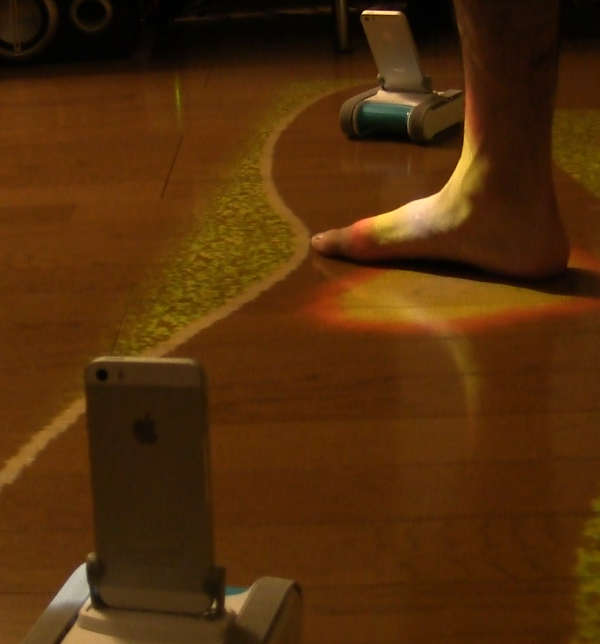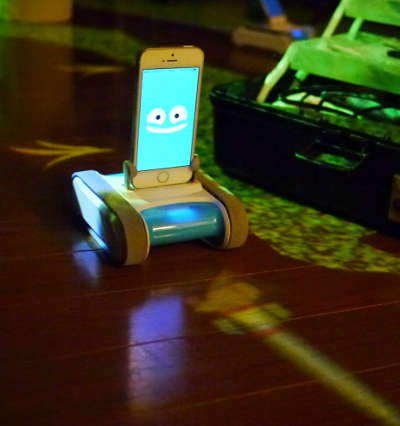| RomoCart Brings A Race Track To Your Living Room |
| Written by David Conrad | |||
| Saturday, 11 October 2014 | |||
|
This is a small but innovative project that demonstrates what you can do if you think outside the box - or outside the screen. Is it AR, VR or just reality? I don't know about you, but I was given two of those "drive a phone" buggies last xmas and after spending a few minutes playing I ran out of interest - but perhaps that's because I ran out of ideas. The "Laboratory of Kawamoto" has no such problem with ideas and has managed to put together a really fun-looking physical game using Romos. The result is a Mario Kart-like game.
A Romo is a small tracked toy that carries an iPhone around your room under the control of another iPhone. You can use it as a sort of "drone" on tracks because you can drive it around while viewing the scene via its front facing camera. There are similar devices for Android but this particular project is iPhone-only, unless you care to take the time to implement it yourself. To create a physical game from a pair or more Romos you also need a DRGB camera like a Kinect, a Xtion is used in this implementation, and a projector. The DRGB camera is used to scan the room and automatically generate a race track layout that makes good use of the obstacles.
The projector is then used to turn the room into a race track by projecting both the fixed course and dynamic game play elements. A game pad and an app allows the user to control their Romo. Take a look at the game in action:
My favourite innovation is the idea that a player can stamp on a missile with a suitably placed foot. Over used this idea could result in chaos, and probably broken Romos.
The program that does all the work is written in Java. The track construction uses a Voronoi diagram around the obstacles to generate the track. The projector is corrected using a suitable matrix transformation so that the track and scenery isn't distorted because of its location. The Romo tracking algorithm is also interesting. Using the gamepad's inputs, the probable location of the Romo can be computed using dead-reckoning. The depth camera is then used to identify likely looking objects in the expected region. Simple - but it seems to work. It all goes to demonstrate that you don't need a VR headset to design games that have a "physical" component. How much more physical interaction could be in and what other games could the idea apply to? Is it worth painting your floor with "projector screen" paint? When will there be a Kickstarter (let us know if there already is)?
More InformationRelated ArticlesAquaTop Display - A True Immersive Interface Kinect plus a glass wedge gives ...
To be informed about new articles on I Programmer, install the I Programmer Toolbar, subscribe to the RSS feed, follow us on, Twitter, Facebook, Google+ or Linkedin, or sign up for our weekly newsletter.
Comments
or email your comment to: comments@i-programmer.info |
|||
| Last Updated ( Saturday, 11 October 2014 ) |




